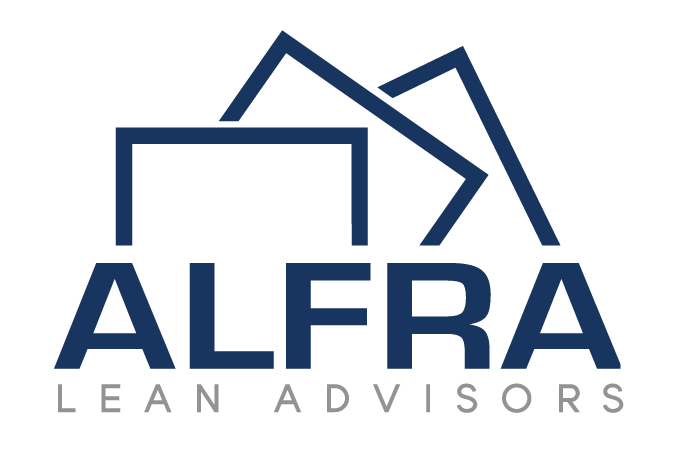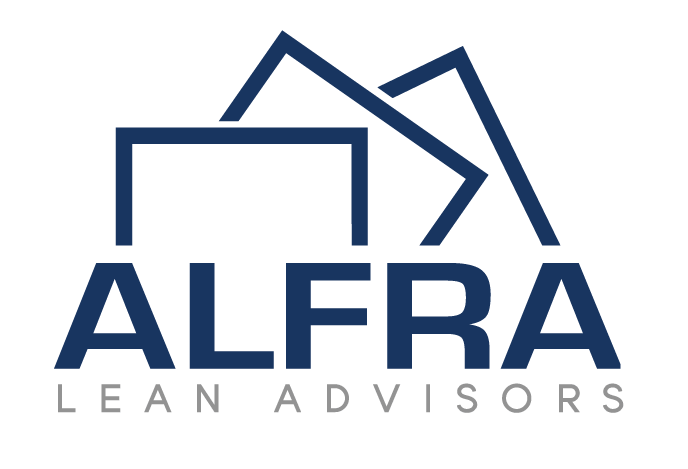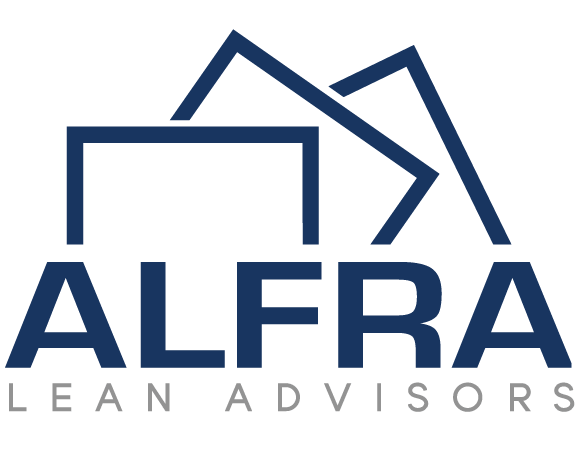What is Leader Standard Work (LSW)?
- Leader Standard Work (LSW) is the repetitive pattern of activities that allows the leader to observe normal and abnormal work conditions and coach subordinates at the Gemba walk.
- LSW works together with other 3 elements to help leaders driving improvements and achieving the company’s goals:
- Daily Management (or Tiered Accountability),
- Visual management,
- Sustainability and Continuous Improvement.
- Through this process leaders check and monitor:
- the metrics & visualization by each level.
- The hourly, by shift, daily, weekly, monthly performance.
- LSW is “process-focused”, but not a “person dependent”.
- It facilitates teaching and training, informal and on-the-job.
- Is a method for leaders to learn and gain insight into their business.
“A Standard is not immovable but it is the benchmark for future improvements” – Nicu G.
Why is Leader Standard Work important?
- The formal Leader Standard Work is a necessary tool for leaders, helping them to develop “the expected way they think and act”.
- It defines leaders’ roles in order to identify and remove barriers, driving value-added actions.
- Ensures the usage of defined development process/standardized work, coach on process adherence/standardized work, and holds team members accountable for process adherence to standardized work.
- Create the right framework for problem-solving, removing barriers, and helping to develop kaizen ideas. In fact, it is a systematic approach to surfacing opportunities for improvement.
What is the content of Leader Standard Work?
- The activities to improve the processes and results, sustain gains, including routine audits and specific activities facilitating employees’ empowerment and growth. Daily management activities to be executed in order to drive operational performance.
- Repetitive activities designed to identify abnormal situations such as non-standard work, non-standard labor, non-standard inventory, non-standard output.
Examples of Leader Standard Work
- SW should be created for the user’s purpose but not to satisfy a formal requirement.
- Develop an audit system to periodically review the adherence to the standards and identify new opportunities for their improvement.
- Identify the experts that can own the standard work.
- If the process is not already documented, then start with the current practice. If there are several versions (different people doing the same activity), integrate them by selecting the best of practices.
- Documentation should be simple and easy to use: can be flow charts, checklists, excel macros, graphs, etc.
- Where ever possible, promote the visual aids.
- When necessary, create a training module to teach people about SW.

Standard Work for Team Leader

Standard Work for Team Leader

Standard Work for Supervisor
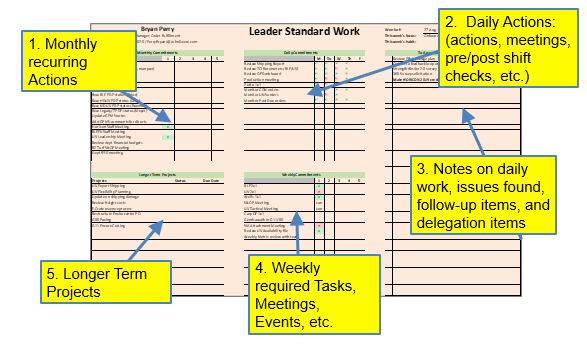
Standard Work for Value Stream Manager
Recommendations
- The LSW should be monitored, audited, and updated every time when evolution was identified and accepted.
- Keys to successfully sustained and continually improve LSW:
- Strictly follow the Leadership Standardized Work content
- Define a process to update LSW
- Maintain Visual Controls
- Rigorous adherence to Tier Meetings (Daily Management)
- Faithfully conduct Gemba Walks
- Gain and maintain Employee Involvement
- Regularly assess the process and progress
- LSW should be mandatory to be developed and implemented for leaders at all levels in a function.
Conclusions
- Leader Standard Work is a component of “Leadership Standardized Activities and Practices” which is a systematic, layered approach to support execution of a leader’s role, including several key elements, such as:
- Communication
- Safety & Security
- Problem Solving and Continuous Improvement
- Accountability Meetings
- Gemba Walk & Coaching
- Standardized Work Process
- 5S
- Resource Deployment
- The level of LSW’s deployment and respect is one key indicator of the maturity of an organization.
